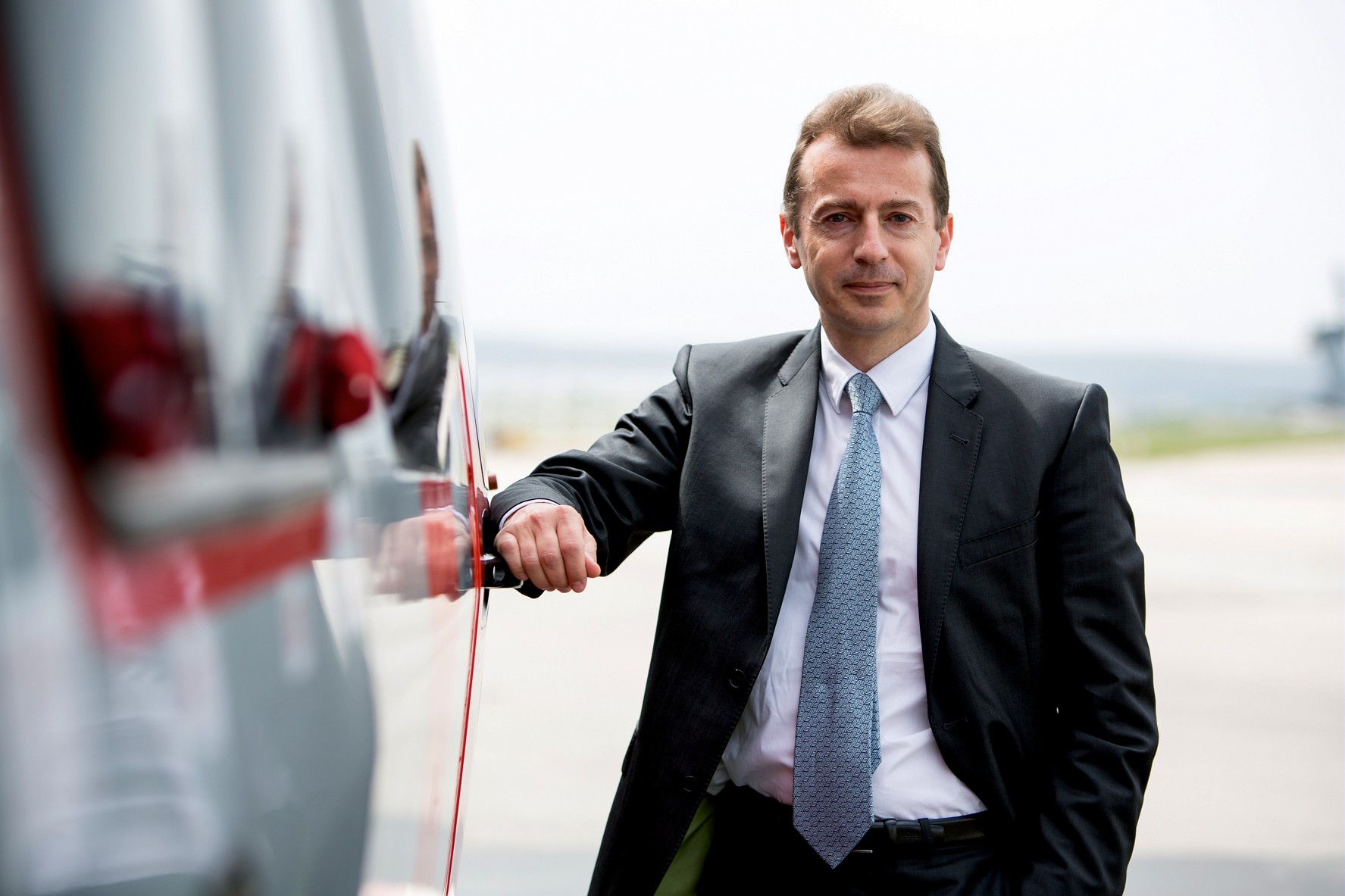Airbus Helicopters CEO Guillaume Faury has defended the global performance of the H225 program, and claimed the situation facing the aircraft in the North Sea, where operators appear reluctant to operate the type again after an accident in April 2016, should be seen as an opportunity to raise the overall level of safety in the industry.

Speaking with Vertical at the Helitech show last week in London, Faury said the program is doing well in other areas of the world and for other missions, describing those offshore oil-and-gas operators expressing a lack of confidence as “exceptions.” The relationship with most operators has remained “good” since the beginning of the crisis, he said. “Our customers realize we are at their side.”
H225 operations are now allowed by all civil aviation authorities in the world. As of late September, 183 of the aircraft had returned to service. This was out of a global fleet of 346 civil and military H225s and Super Puma L2s (the two types affected by earlier main gearbox problems). “Return to service is ongoing,” Faury said.
The absence of orders since April 2016 in the oil-and-gas market should be put in perspective, he said. The Sikorsky S-92 has also not received any oil-and-gas orders, he noted, as this market segment is still suffering from overcapacity. Despite this, the H225 has recorded sales in the VIP, parapublic (for the Japan Coast Guard, for instance) and military segments. “Other operators [outside of offshore oil-and-gas] have a very positive view of this aircraft,” Faury said. Asked whether the program could be terminated, he said, “this is not an option.”
But Faury does not hide from the “major setback” the program has encountered. “I want to use the H225 accident to enhance safety and make us progress; my role is to give a meaning to all this, for more safety, new practices and new technologies,” he said.
As part of this, Airbus Helicopters engineers have designed a full-flow magnetic plug, which “sees” the entire oil flow. Detection of metal particles, which may indicate spalling, is thus improved. Before the Norway crash, spalling was a precursor to the failure of the main gearbox, but had gone unnoticed. Research into vibration sensing and analysis on moving gears – another way to reveal damage – is ongoing.
Moreover, engineers have gone back and checked stress analysis for every model in the product range. And, after excluding one of two types of planet gear for the H225, they similarly removed two types of planet gears for the Dauphin family.
Another precautionary measure has been with logistics, to prevent “external damage.” The failed main gearbox on the accident aircraft in Norway had been involved in a road accident during transport in 2015, but the Accident Investigation Board of Norway said it found no connection with the crack. Airbus Helicopters said it has taken action to avoid such a scenario – a main gearbox suffering a road accident and then being put back into service – in future.
The airframer has therefore devised an enhanced packaging. The main gearbox inside the new crate benefits from better dampening. Internal sensors monitor bank angles, temperature, hygrometry and acceleration. The last sensor thus detects shocks. A second, similar sensor is made conspicuous on an outer side of the crate, thus signaling to handlers that a shock may be traced back to them.
In a survey, Airbus Helicopters has found that 60 percent of the 5,000 respondents (all in the offshore oil-and-gas sector) would be uncomfortable with flying in the H225. A second finding, however, was the majority did not know what the company had done to address the aircraft’s woes.
The manufacturer has therefore launched an “awareness campaign.” Airbus Helicopters officials say they have maintained contact with oil-and-gas safety organizations like Step Change In Safety in the U.K. They are now transitioning to a phase of “explanation to customers.” On their to-do list, they will soon have meetings with pilots, maintenance technicians and, ultimately, passengers.
The H225’s planned successor, codenamed the X6, is still in the “concept phase.” The market is volatile and “we are refining our market studies and long-term outlook,” Faury explained. “We are not at the end of the feasibility study.”










Could you tell the manufacturer of the vibration analysis equipment being trialed?
Thanks